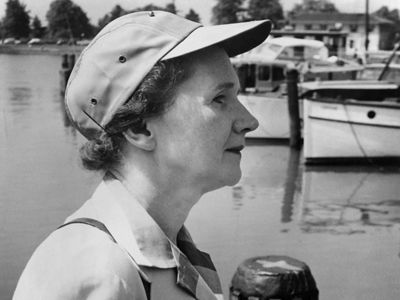Gifts for the Future
Rachel Carson donated the royalties from "Silent Spring" to help protect her beloved coast of Maine.

Hope Springs Eternal
High tide daily replenishes the salt pond on Maine’s Boothbay Harbor where Rachel Carson spent many summer days gathering material for her classic 1955 book, The Edge of the Sea.
Carson began her career as a biologist at the U.S. Bureau of Fisheries, but in the early 1950s she turned her energies toward being a full-time nature writer. Most famous for her groundbreaking 1962 book, Silent Spring, which detailed the damage to wildlife caused by widespread pesticide use, Carson herself was a steadfast advocate for Maine’s wild coast.
In 1956, she successfully petitioned The Nature Conservancy—then working mostly in New York state—to open a chapter in Maine. She then chaired the chapter’s board of trustees until she died in 1964.
While Carson has been credited with launching America’s modern environmental movement, her legacy in Maine continues to be specific and personal long after her death: At her direction, royalties from Silent Spring have helped TNC protect not only the salt pond that so captured her interest, but many of the most iconic landscapes along the Maine coast.
